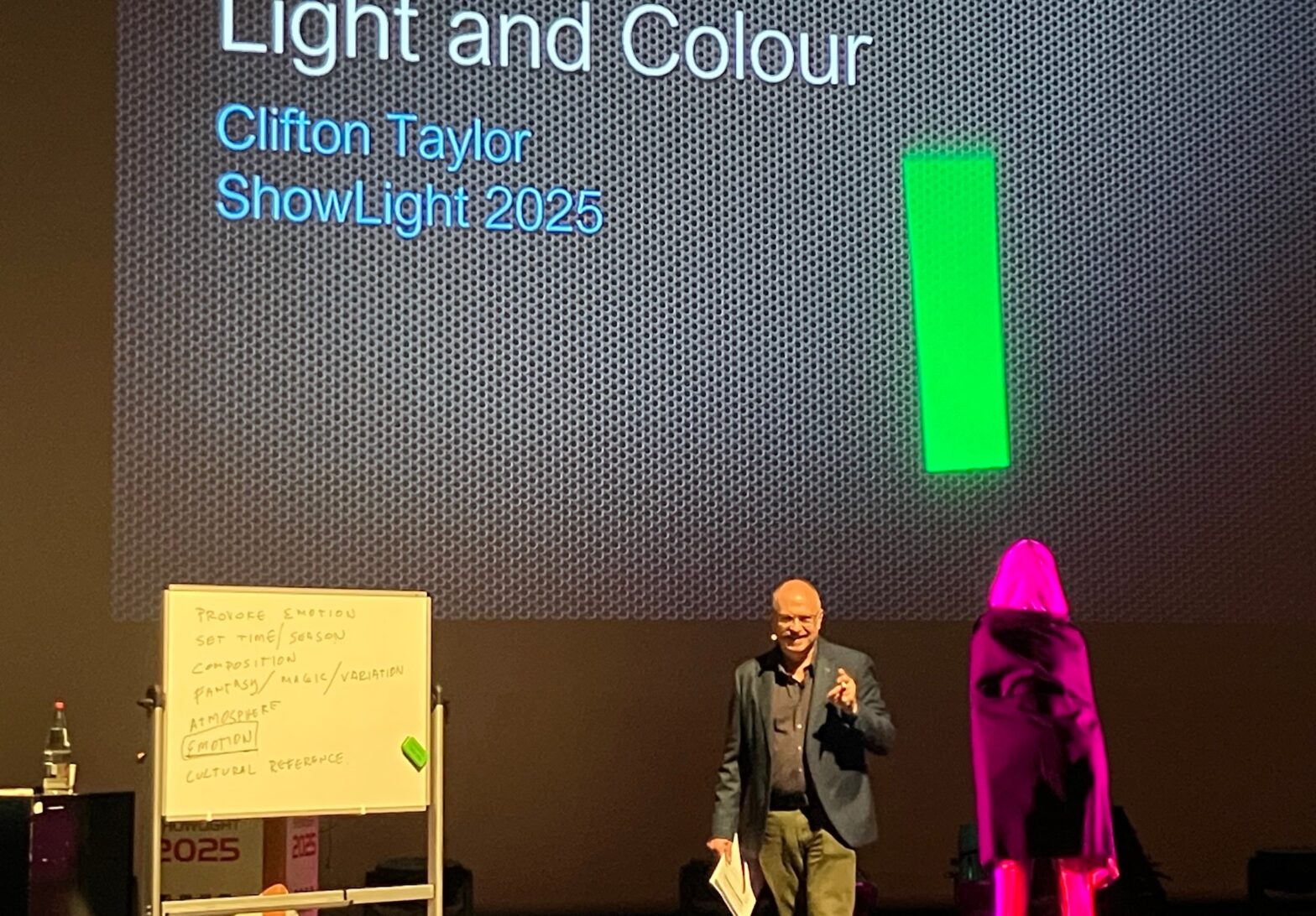One of the new highlights at Showlight 2025 was a number of workshops that ran from 30 minutes to two hours and contains deeper dives in selected topics compared to Showlight's Strictness 20-minute presentations. The first of which was “color and light in the age of LED lights”, which was presented by the American light designer Clifton Taylor.
Taylor, who is also one of the founders of the Studios School of Design, has the color that he has been presenting with LD Beverly -MMMS for many years, has updated the color. When he moved into the LED colored pallets, he found his approach to from previous perceptions to meays, with a new vocabulary and new types of viewing color and light.

“Are we in crisis,” asks Taylor, noting that we have completed the “revolution” mentioned in his book, but where does that let us? “LEDs have completely changed our world and took over our business,” he says, asking for a handling of theater consultants in the audience to confirm his theory that new buildings no longer indicate dimmers. “The increase in the LED is fully grown,” notes Taylor and notes that most designers do not have the flexibility of LEDs.
With a carefully orchestrated demonstration of the color mix with LED sources, Tayor asks the basic question: “Why do we need color?” Feelings. Atmosphere. Cooperation with set and costume designers. Depth. Variation. Different sources. The answers from the audience vary greatly, but indicate the importance of color in most situations. For me it was a look back at the TaylorMons color lecture in the Broadway Lighting Master classes, in which the color scrollers were an essential aspect when it came to leading such a demonstration with gel and not with LEDs.

Taylor pointed out the development of LEDs and found that the first blue in Japan was available in 1992 and made a white color and a revolutionizing LED sources for stage lighting possible, from the early RGB lights to LED video screens. “Adding a lime -LED creates a better white with more brightness,” emphasizes Taylor, proving his point of view by adding lime to add lime. When Taylor LED light engines are considered, Taylor prefers the lime to the amber or white. And notices that you always need red and lime as well as blue, but which blue? Which red?
“Don't be afraid of LEDs,” he admonishes. “They define our culture. Obsessed with what we had and do not emphasize about old gel colors. Make new ones,” he advises, and says it has been years since it used colors like Bastard Amber. In fact, scientists discover new colors such as “Olo”, a blue -green one that has recently been created by stimulating specific cells in the retina.
Misses Taylor tungsten? I would say for certain uses in certain situations, especially for the lighting of skin tones. But as he admits: just like Technicolor in 1939 (The wizard of OZ) and Eastman Color in 1971 (((Clockwork Orange), opened our eyes for new perspective on color and continued to lead the LED revolution into new territories and illuminated designers have endless new pallets to conquer color.
Take a look at the reporting of Live Design about the Showlight 2025
